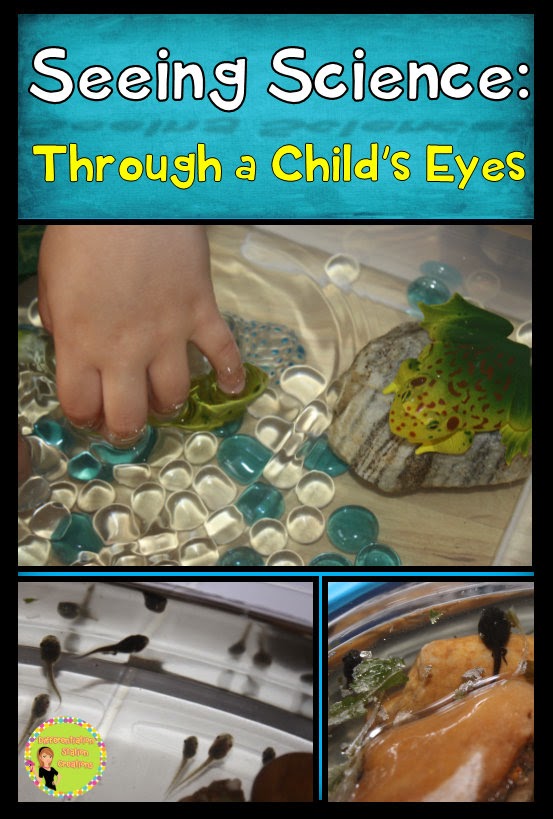Spring is one of my favorite times of year to explore nature and science. Plants and animals are almost bursting into the world. The life cycle of animals like tadpoles, chicks and butterflies are happening quickly right before our eyes. Exploring these life cycles can be magical to children and adults alike. I find that I want and need to remember the magic when teaching science to children. The best part of science is that there is an abundance of magic!
Last summer I was on a car trip with my children. We needed a quick break at a rest stop and came upon this moth. When we first glimpsed this moth it's wings were closed and it was pretty, but not spectacular.
My daughter was the first to squeal with delight, as the moth opened it's wings. She kept yelling, "Mommy it has eyes on it's back just like you!!" (Awhile ago, I told my kids that I have eyes in the back of my head and they hold onto the literal version).
Both kids chattered on about the moth with fake eyes for the hours we spent riding in the car. That moth was magic to them. I was able to capitalize on that magic to bring in discussions on the purpose of markings on animals, camophlage, and survival of the fittest. This moth brought science to life.
Kids learn best through experiences. Think about your most memorable learning experiences. Most people will recall something that involved a hands-on, real-life component.
Learning in the classroom can not be all hands-on learning and there needs to be other types of learning. However, giving children the opportunity to learn through experience is critical. It not only sparks children's interest in learning, but often helps them really integrate that knowledge into future learning experiences. Let your kids manipulate science through hands-on experiences.
When we learned about the life cycle of a frog, we caught tadpoles and watched them grow in an aquarium.
We read books about the frogs and tadpoles.
And we created our own froggy sensory tub. We used a plastic Tupperware, dollar store beads, and rocks from outside.We added water and plastic figures of frogs in various stages of the life cycle.
The kids were able to explore the life cycle of a frog with their hands.
I found that the kids used science terminology correctly and frequently when they were able to "experience" the science.
Even if you can't find tadpoles or butterflies to bring into your classroom, you can get creative to find a way to bring science to life.
Here are some of my favorite posts on creative ways to bring science to life:
- "3 Insanely Cool Science Experiments With An Egg" Do three different science experiments with one egg. Awesome! -Playdoh to Plato
- "Plant Water Filtration Experiment" This experiment filter water through plastic milk jugs full of dirt, leaves, and finally planted grass. Shows how plants help filter our water. -Garden and Farms
- "How to Make Lightning" A simple experiment demonstrating static electricity. -Learn Play Imagine
- "Pollination" Use Cheetohs to explore pollination. Genius!! -E is for Explore
There are so many more creative ideas out there on how to bring learning to life! Check out my Pinterest board on Creative Science Ideas for Kids and find a whole world of hands on science ideas!
I hope that spring is awakening in you!















No comments:
Post a Comment